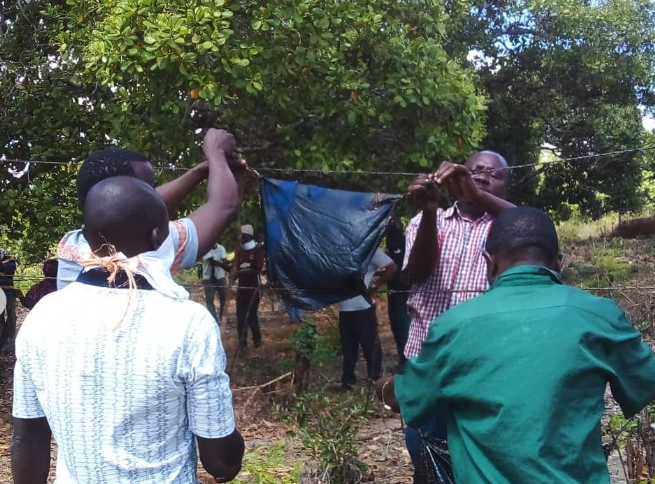Chili fences are made of two to three strands of sisal string strung along poles surrounding a crop field. Materials for construction of chili fence around one acre is as follows:
– Sisal rope (5 kg)
– Mutton clothes or rages (32 pieces, size 2 x 1.5 ft)
– Ground chili (chili powder) (2.5 kg or more)
– Spent engine oil (10 liter)
– Poles (height 3 m and thickness 2-3 inch)

Fences are best built around fields as the crops are ripening and close to harvest. This timing helps keep elephants from getting used to the fences. Make sure you prepare the buffer zone one meter or more either side of the fence of which the farmer clear all vegetation. You do not want the elephant to leave the thick forest and walk straight to the crop field.

Chili fences can be combined with an alarm system such as bell, tin cans and plastic bottles (with holes) filled with mixture of chili and spent engine oil which can splash to the face of elephant when elephant try to push through the fence
After the harvest, the fences should be broken down right away and the poles stored in a dry place for the next season and the rope and clothes stored if it is decided it can be used again next year to avoid elephant habituation.
Farmers are advised to maintain trees that surround the crop field which can be used as live poles. This will minimize the work load and cost of installing fence poles each year.

Chilli Briquettes
Farmers can create chili bricks by mixing cow or elephant dung and water, dry it to the sun and burn them at the border of the crop field or deploy on elephant trails. The mixture could be 50/50 of cow dung and chili. The farmer should aim the smoke to go the direction to trails or where elephant take refuge. Elephant will try to go to areas which are free from chili smell. Sometimes a farmer can burn a mixture of cow dung mixed chili if there are no readymade chili bricks to ward off elephants from crop fields or human settlement.